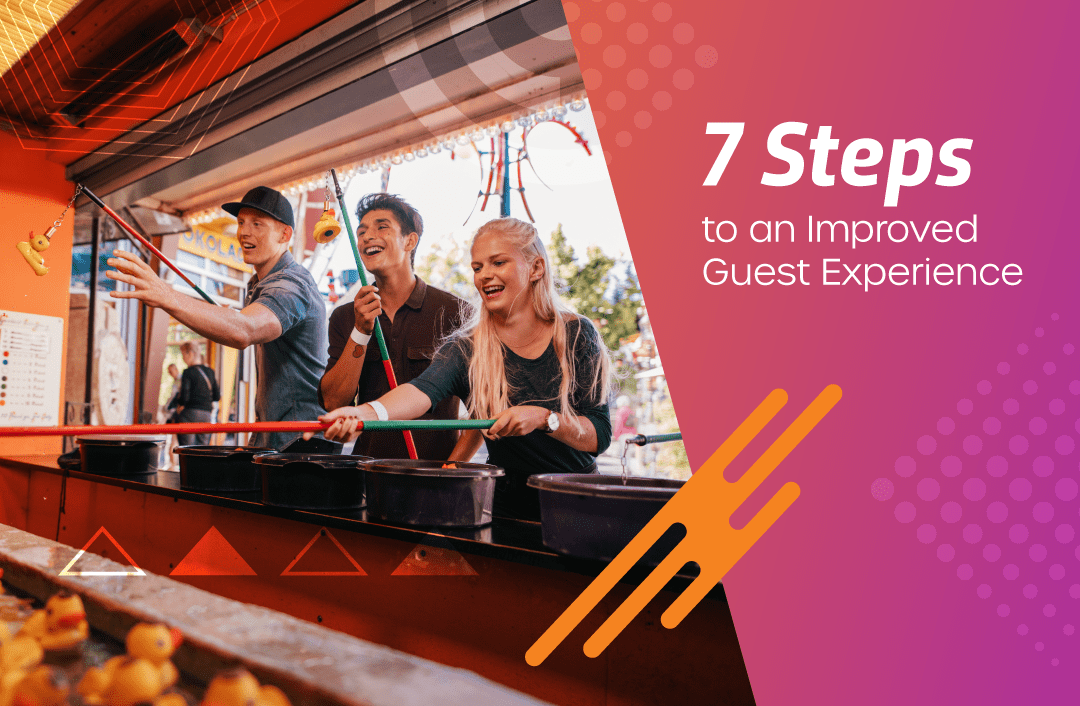Tips to help you develop a successful email marketing campaign for your family entertainment center.
Crafting the right email marketing message can sometimes feel like the quest to find the elusive unicorn. But an effective email marketing strategy is a great tool you most likely can’t afford to skip. If you’re new to FEC or amusement email marketing, check out these tips to get started. When it comes to creating the right message, though, there are five questions that every great email should answer.
1. Who is the hero in the story?
I’ve been devouring Donald Miller’s Building a StoryBrand on marketing and recently discovered what I think is a nugget of brilliance. We know that when selling we should put things into our guests’ perspectives to help a buyer discover why they want to buy from us. Miller suggests taking this a step further.
He argues that many times, we see ourselves — or our company — as the hero of our story, but instead insists that our buyer is actually the hero. The best marketers, he says, “position [themselves] as Yoda, and their audience [the buyer] as Luke Skywalker.”
When crafting messages, first determine who is the hero – your intended audience. Figuring this out first is vital because knowing to whom you want to sell enables you to craft messages that speak directly to that audience’s unique needs. Your FEC or amusement park guests are more likely to open a message that is personalized and relates to them.
Your facility management software should give you access to a lot of this demographic spending behavior if you connect sales to specific customers through the use of waivers, registered game cards, assigning attraction tickets to guest profiles, or through the use of a loyalty program. Consider these potential audiences:
- Guests with an upcoming birthday
- Guests who have had a birthday party in the past
- Guests who have booked a non-birthday party event in the past
- Members of your loyalty program
- Members of your loyalty program who joined in the last 30 days
- Guests who have purchased a specific attraction or item in the last 90 days
- Guests who have a liability waiver on file
- All guests in the database
When you consider different audiences you may notice that you’d give them entirely different messages. Sure, you could send a special offer to all database contacts and get a decent return on your result. But consider the impact potential of an introductory email that is sent to new members of your loyalty program with the subject line: “Welcome VIP, 3 steps to getting your first reward.”
In today’s reward-centric consumer landscape, getting members engaging with your brand right away means you stand a better chance of staying top of mind. Bottom line, be clear about the audience for your message and then build the right message to get their attention.
2. What does the hero (buyer) want?
You know that your FEC or amusement park is the best place to play in your area. You have the best staff, the best offerings, the best food, etc. But guess what? That’s not what guests want – the answer is much more personal. Your message must position your offering not as the answer to their needs, but rather, as the means of fulfilling those needs. Consider a parent with an upcoming child’s birthday. What’s on their mind? Perhaps:
- How do I give Jose the best birthday party he’s ever had?
- How do I save my house from getting beat up like last year?
- Is there anyone who can help take some of the load off?
- I have no time to plan a birthday party.
- How do I compete with my Pinterest-worthy sister-in-law’s parties?
- Where can I take 10 kids without having a nervous breakdown?
Consider what the needs of your audience might be and you’ll be able to connect with them, build trust and sell more. Your facility’s birthday party offering might answer more than one of those, but first, you’ll have to show them that you’ve been listening, that you understand them and – yes, that you can help them. Equip them with what they need to be their own hero and you’ll achieve your goals and more.
3. What should the message include?
Every email message should include a compelling hook – a subject line meant to encourage readers to open and learn just what’s inside. There are hundreds of different approaches, but remember that a subject line isn’t about you or your facility, but rather an appeal to something that will resonate with your potential buyer. For a child’s birthday, perhaps you use the child’s name, or talk about the memory a parent might want their child to have from a birthday party.
There’s never a perfect subject line, but you can always test different messages to parts of your list with different subject lines and analyze which subject lines yield the best results and go from there. While there are many online resources to test subject lines and provide guidance, there are a few common subject line trends I’ve seen lately that should be avoided.
- Don’t try to trick buyers with misleading subject lines – nothing gets you marked as Spam as fast as when a reader feels like your email text doesn’t match up with your “hook.”
- Don’t use names to personalize email if you don’t have a clean database. The old saying “garbage in, garbage out” holds true and you run the risk of turning people off if you use their name incorrectly, call them by their last name, have poor spelling and capitalization, etc.
- Don’t shame people into opening. There are many organizations who believe in guilting readers into opening their emails, but is that what you want to be known for? I get emails all the time that tell me “I haven’t been able to reach you” and “I won’t contact you again if…” Guess what, if my mother’s “or else” threats didn’t work, no random sales or marketing guilt trip will. There is a time and place for creating a sense of urgency when something is time-bound as long as it’s in the best interest of the buyer. Use “act now” and “last chance” messaging truthfully, sparingly, and from your guest’s perspective. The message “Act now or I won’t contact you ever again” (implied: and then you’ll be sorry) is about the seller – and buyers simply do not care – nor should they. However, the message “Act now to claim your awesome bonus/save more money/have more fun/etc.” communicates a sense of urgency and positions your facility as a helper to your buyers – ensuring they don’t miss out on this great opportunity.
4. What’s the next step?
Every marketing email should include multiple calls to action. This can be in links found to invite them to purchase online, a phone number to call or an email address. Include links to your website or social media pages so that guests can contact you in the manner that suits them best.
5. How will I know if a campaign works?
Measure success of each email campaign that you send so that you can begin to develop your own set of best practices. Try sending them at different times of the day and on different days of the week and determine if that affects your email open and click-through rates. When marketing for group events, lists of the people who engaged with your email become warm leads that your sales team can begin contacting about booking events, and track in a customer relationship management tool like HubSpot, Zoho or Insightly – all of which offer a free limited version.
Anecdotally, special offer emails tied to a certain time period can be measured by reviewing sales reports for the period during the campaign vs. another time period, such as year over year, or month over month. Compare throughput, attraction sales and other ancillary sales to gauge success.
One of the best ways to measure success is through the use of an actual offer promo code (whether it’s a discount, bonus or combo). Your offers can contain barcodes, which are scanned at the time of use. Sales tied to these offers are then reflected in several promotion reports. In CenterEdge Advantage, reports include Customer Discount, Discount Summary by Date Range, and Discount by Source Code. Using a source code enables you to use similar promotions throughout the year but label them as tied to a particular code. A unique source code can be generated with any discount or coupon, and then used in your email promotion. In fact, if you wanted to A/B test the effectiveness of different email texts or subject lines, you could segment your list and send each version with its own source code to allow you to analyze their effectiveness.
Email marketing is an important part of the game, and there are many ways to succeed in doing so. Your point of sale is a tool meant to help you achieve your revenue goals. For questions about promotion codes, source codes, and barcodes in CenterEdge Advantage, reach out to us at Training@centeredgesoftware.com.
Search Resources
Subscribe to Email Updates
Featured Resources
News //
CenterEdge Chosen as Exclusive Software Partner for Launch Entertainment Growth Plan

Blogs //
How to Build Better Relationships With Your Guests

Blogs //
7 Steps to an Improved Guest Experience

Blogs //
5 Features of CenterEdge’s New Integration with Semnox

Posts by Topic
- Advantage Payments (7)
- Brand Management (19)
- Business Growth (81)
- Capacity Management (2)
- CenterEdge News (30)
- Client Interviews (9)
- Credit Card Processing (3)
- Data & Reporting (12)
- Digital Signage (1)
- Event Management (20)
- Facility Management (10)
- Food & Beverage (8)
- Guest Experience (34)
- Guest Management (20)
- Holiday Season & Promotions (5)
- Industry Events (12)
- Inventory Management (1)
- Loyalty Programs (8)
- Marketing Tips (24)
- Operations (1)
- Point of Sale (10)
- Product Launch (11)
- Productivity (5)
- Profitability (35)
- Redemption Management (1)
- Sales (35)
- Season Passes (1)
- Team Training (60)
- Waivers (2)

Leave a Comment